Covid-19 Government Support Update September 2020
On 25th September the government announced further Covid-19 support for employees and businesses. Below is our summary of the support schemes coming up.
Talk to us if you need help with claiming the support or making a plan for the future of your business – our team is here to support you in any way we can.
Job Support Scheme
A new Job Support Scheme will be introduced from 1 November to protect jobs where businesses are facing lower demand over the winter months due to coronavirus (COVID-19). The scheme will run for six months.
Employers will continue to pay the wages for the hours staff work. For the hours not worked, the government and the employer will each pay one third of their usual wages (capped at £697.92 per month). Employers will need to meet their share of the pay for unworked hours, and all employer National Insurance contributions and statutory pension contributions, from their own funds. This means that employees will receive at least two thirds of their usual wages for the hours not worked.
To be eligible, employees must:
-
be registered on PAYE payroll on or before 23 September 2020. This means a Real Time Information (RTI) submission notifying payment in respect of that employee must have been made to HMRC on or before 23 September 2020
-
work at least 33% of their usual hours. The government will consider whether to increase this minimum hours threshold after the first three months of the scheme.
Full details are available here: Job Support Scheme factsheet.
The Job Support Scheme will be open to employers across the UK even if they have not previously applied under the Coronavirus Job Retention Scheme (CJRS) which ends on 31 October. The Job Support Scheme will start from 1 November and employers will be able to claim in December. Grants will be paid on a monthly basis.
The scheme will operate in addition to the Job Retention Bonus. Businesses can benefit from both schemes in order to help protect viable jobs.
Job Retention Bonus
The Job Retention Bonus is a one-off payment to employers of £1,000 for every employee who they previously claimed for under the Coronavirus Job Retention Scheme, and who remains continuously employed through to 31 January 2021. Eligible employees must earn at least £520 a month on average between the 1 November 2020 and 31 January 2021. Employers will be able to claim the Job Retention Bonus after they have filed PAYE for January and payments will be made to employers from February 2021.
More details on Job Retention Bonus can be found here.
SEISS Grant Extension
The government is continuing its support for millions of self-employed individuals by extending the Self-Employment Income Support Scheme (SEISS) grant. Self-employed individuals and members of partnerships who are eligible for the SEISS and are actively continuing trading but are experiencing reduced demand due to coronavirus (COVID-19), will be eligible for a further SEISS grant to provide support over the winter months.
The first grant will cover a three-month period from the start of November 2020 until the end of January 2021. It will be a taxable grant to cover 20% of average monthly trading profits, paid out in a single instalment covering three months’ worth of profits, and capped at £1,875 in total.
An additional second grant, which may be adjusted to respond to changing circumstances, will be available for self-employed individuals to cover the period from February to the end of April – ensuring our support continues right through to next year.
More information will be published in due course but in the meantime the current fact sheet has all the details.
VAT Deferral New Payment Scheme
If you deferred payments that were due between 20 March and 30 June 2020, then these payments need to be made to HMRC by 31 March 2021. Employers can use the New Payment Scheme to spread these payments over equal instalments up to 31 March 2022. Alternatively, they can make payments as normal by 31 March 2021 or make Time To Pay arrangements with HMRC if they need more tailored support.
New Self Assessment Self-Serve Time To Pay Scheme
If you deferred paying your July 2020 Payment on Account, you will need to pay the deferred amount, in addition to any balancing payment and first 2020/21 Payment on Account, by 31 January 2021. This may be a larger payment than you usually pay in January.
If you are unable to pay your Self-Assessment (SA) bill in full by 31 January 2021, you can set up a Time to Pay payment plan of up to 12 months online without speaking to us. If employers have SA tax debts of up to £30,000, they will be able to access this Time to Pay facility through GOV.UK and will get automatic and immediate approval. If their SA debts are over £30,000, or they need longer than 12 months to repay their debt in full, they will still be able to use our Time to Pay arrangement by calling HMRC.
Other business support schemes:
Changes to CJRS – what you need to do from 1 October.
From 1 October, HMRC will pay 60% of usual wages up to a cap of £1,875 per month for the hours furloughed employees do not work. Employers will continue to pay furloughed employees 80% of their usual wages for the hours they do not work, up to a cap of £2,500 per month. Employers will need to fund the difference between this and the CJRS grant themselves.
The caps are proportional to the hours not worked. For example, if an employee is furloughed for half their usual hours in October, employers are entitled to claim 60% of their usual wages for the hours they do not work, up to £937.50 (half of £1,875 cap). Employers must still pay their employees at least 80% of their usual wages for the hours they don’t work, so for someone only working half their usual hours they’d need to pay them up to £1,250 (half of £2,500 cap), funding the remaining portion themselves.
You will also continue to pay furloughed employees’ National Insurance and pension contributions from your own funds.





